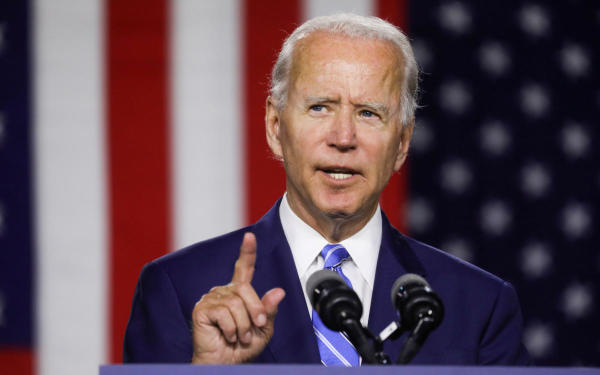
Despite Joe Biden’s consistent lead in national and battleground state polls, the lingering worry among Democrats is that the veteran politician is not inspiring enough to mobilize a winning coalition against President Donald Trump’s deeply devoted base. Hand-wringers point to Hillary Clinton, who lost to Trump in 2016 in large part because she failed to get the Democratic base out in sufficient numbers to tip several key states in her direction.
New polling by Priorities USA suggests that’s not the case. The Democratic Super PAC took a close look at “new Biden voters” – people in six battleground states (Arizona, Florida, Michigan, North Carolina, Pennsylvania and Wisconsin) who were not committed to Biden two months ago, but now say they will vote for him – and found that the former vice president is attracting support from the very kind of voters who denied Clinton the job in 2016.
Cartoons on the 2020 Election
In 2016, 47% of voters in those six battlegrounds cast ballots for Trump, 46% for Clinton, while 4% said they voted third party, the poll found. This year, there is a “new Biden voter,” representing about 7% of voters in those six states.
Among that smaller (new Biden voter) group, 21% voted for Trump in 2016, while 8% voted third party and 10% did not vote four years ago.
When the numbers are crunched further, those who voted for a third party in 2016 now favor Biden over Trump, 46% to 21%, according to Priorities USA chairman Guy Cecil. Just a tenth of people who voted third party in 2016 in those battleground states say they will do the same this year, he said.
Non-voters in 2016 also prefer Biden, with 51% saying they will vote for Biden, and 37% ready to cast a ballot for Trump (2% said they will go third party, and 10% are undecided). “Among both of these types of voters, Trump fundamentally faces an uphill battle,” Cecil told reporters in a conference call.
The shifts are seemingly small but have a potentially pivotal impact on who will be America’s next president. Trump’s wins in Wisconsin, Pennsylvania and Michigan were by less than a single percentage point in each state, meaning slight movements in support are critical. Florida which Trump won by 1.2 percentage points four years ago, and Arizona, which the president took by 3.5 percentage points, are both more competitive this year.
Biden has long struggled to animate young and progressive voters, many of whom are still stung by the second failed presidential bid of Sen. Bernie Sanders of Vermont. Polling has consistently shown that a major part of Biden’s appeal is the desire to oust Trump, and the Trump campaign has counted on the fact that the president’s backers are more dedicated, and more likely to show up and vote.
The Priorities USA poll, however, shows that Democrats are not only solidifying their base, but winning over more “persuadables,” Cecil said. The group’s Electoral College analysis now shows Biden with a likely 278-vote minimum – 7 more than he needs to secure the presidency – with another 58 Electoral College votes leaning Democratic.
The Trump campaign is also amping up its campaign, Donald J. Trump, Jr., the president’s son, told reporters in a conference call last Friday. The campaign now has 1,500 paid staffers in 23 states, and they have contacted 55 million voters, he said, calling it “the biggest and baddest presidential ground game in this history of this country.”
And the Priorities USA poll found that Biden’s apparent advantage is somewhat tenuous. If Biden’s backing among white working class voters – who favored Trump heavily in 2016 but who have moved a bit more towards the Democrat this cycle – drops by even 5 percentage points in the six battlegrounds, Biden loses his Electoral College advantage, Cecil said.
And if support among people of color, long critical to the Democratic base, diminishes by just 2 percentage points in those states, Biden is also playing defense, Cecil notes.
The major issues helping Biden (or hurting Trump) are the coronavirus and the president’s handling of racial issues, the survey found.
While the battleground has been expanding – Georgia, Texas, Iowa and Ohio are now considered in play – Priorities USA will continue to direct its resources at the six core battlegrounds, Cecil said. “Our most important thing is to get to 270,” he said. “Most, if not all, of our spending will be in those six states.”











